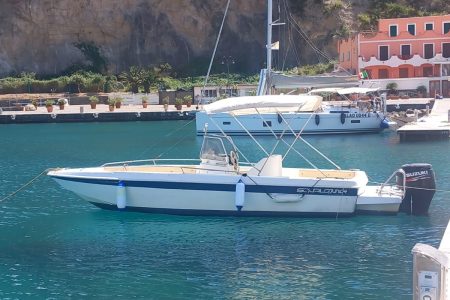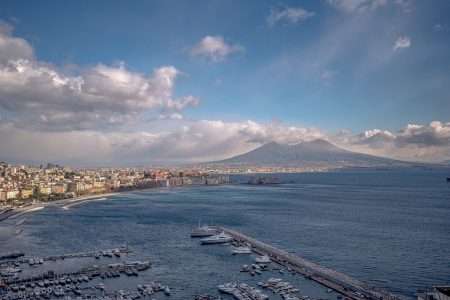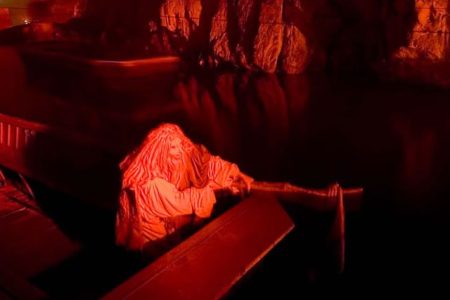Table of Contents
Don Pedro de Toledo was one of the iconic men for the history of the city of Naples. A Spanish viceroy and city administrator, for some historians he acted almost like a ruler. A man with a cold gaze and brusque manner, he loved women, gambling, and fancy clothes and ruled Naples with an iron fist and rigor that often generated discontent.
In his 20 years of Neapolitan rule, Don Pedro changed the face of the Neapolitan capital, building the Spanish Neighborhoods and the famous Via Toledo, Naples' main shopping street. A fascinating but also complex character, he nonetheless erected many public works, stood up to local nobles and barons, and revitalized the splendid Pozzuoli.
Get to know Don Pedro de Toledo better
Pedro Alvarez de Toledo y Zuniga was born in Salamanca in July 1484. We know little about his early years, apart from his marriage to Maria Osorio y Pimentel, thanks to which he was able to obtain the title of marquis of Villafranca. He then entered the court of Emperor Charles V of Habsburg, who at that time ruled over Spain, Germany, northern Italy and Naples.
In the early 16th century Naples was plagued by serious problems, including poverty, starvation, and disease that plagued the population. In 1529 a violent plague epidemic that had killed more than 60,000 people had recently ended, and ferocious pirates were arriving from the sea to plunder the surrounding areas.
To cope with this difficult situation, Charles V sent Don Pedro to Naples as viceroy. The Spanish governor immediately antagonized the local nobility because he was intent on fighting the privileges of the barons, but within a few years he was also able to transform the city, starting with its infrastructure and roads. Via Toledo itself is a clear example of the new urban planning.
Naples was then converted into one of the most impregnable strongholds of the Spanish empire, erecting new walls and building Castel Sant'Elmo to control the Gulf from above. Don Pedro then approved the reconstruction of several residential areas to accommodate Spanish nobles. In fact, he is credited with the area of Santa Chiara and Castel Capuano, while new military residences were erected in what we now call the Spanish Quarters.
You might be interested
Half-day or full-day private boat tours along the Naples coastline (May through October)
per person Book
Romeo and Juliet on stage at the Bracco Theater in Naples: a classic for schools
per person Book
Walking tour and boat ride in Naples: a perfect combination to discover the city
per person Book
Dante's Inferno on stage at Pertosa-Auletta Caves for groups and schools
per person Book
In addition to Naples, the viceroy restructured and repopulated Pozzuoli which had been destroyed and uninhabited after a major Vesuvian eruption. He also placed more than 300 watchtowers on the Neapolitan coast to defend against pirate raids.
Meanwhile, in 1540 Don Pedro founded theSt. James Hospital to treat the Spanish military in what is now the City Hall and inside the building he had the Royal Library of San Giacomo degli Spagnoli built. In his last years of rule he failed in his attempt to introduce the Spanish Inquisition in Naples and still had many enemies among the city's powerful.
In 1552 Charles V sends a letter in which he orders him to quell a popular insurrection in Siena, but the journey threatens the elderly Don Pedro del Toledo's precarious health. On the journey to Tuscany he fell ill and was treated in Florence, where, however, he died and was buried in the cathedral of Santa Maria del Fiore.
The influence of Don Pedro de Toledo on the urban planning of Naples.
Don Pedro's most noticeable impact concerned above all the urban planning of Naples, giving the city the appearance we know. The viceroy understood the need to make a huge redevelopment in all respects and began with the construction of a major road, named Toledo Street In his honor.
Next, he ordered the design of the Quartieri Spagnoli area in 1536 to give hospitality to the Iberian soldiers who garrisoned Naples during popular uprisings. In addition, he commissioned a new sewer network, sections of which are still in use today. He then had the Serino Roman Aqueduct restored and planned to introduce the Vesuvian basalt To pave Neapolitan streets.
On the military side, however, in addition to Castel Sant'Elmo, he had the Aragonese Castle of Baia erected to serve as a watchtower. To top it off, he established the seat of the courts inside Castel Capuano, where they then remained until 1995, when they were moved to the Directional Center. The castle was also the seat of the IRS, at which citizens paid taxes. Because of this, the area was renamed Vicarage, a name that still lingers on the neighborhood.
Via Toledo and the name debate
Via Toledo is the heart of Naples' historic center and one of the city's main thoroughfares. Packed with stores and clubs, it teems with tourists and citizens every day and is one of the access points to the Spanish Quarter. So named in honor of Don Pedro de Toledo, in resurgence era a strong debate began over the name of the street.
In fact, in Naples in 1870 there was a desire to celebrate the breaching of Porta Pia and the annexation of Rome to the Kingdom of Italy, and on October 10 of that year discussion began on the mayor's proposal to change the name to Rome Street. The idea sparked fierce division since it was an ancient street that had retained its name for over 300 years.
On the other hand, there were those who preferred a change to remove the reference to a period of foreign rule over Naples. To solve the problem, it was decided to call the road Via Roma formerly Via Toledo, but this did not please a part of the population determined to defend the previous naming.
Despite popular dissent, by then the decision had been made and it was decided to replace the old license plates with updated ones. Via Toledo was thus called Via Roma until 1980, when the original name was restored.





0 Comments